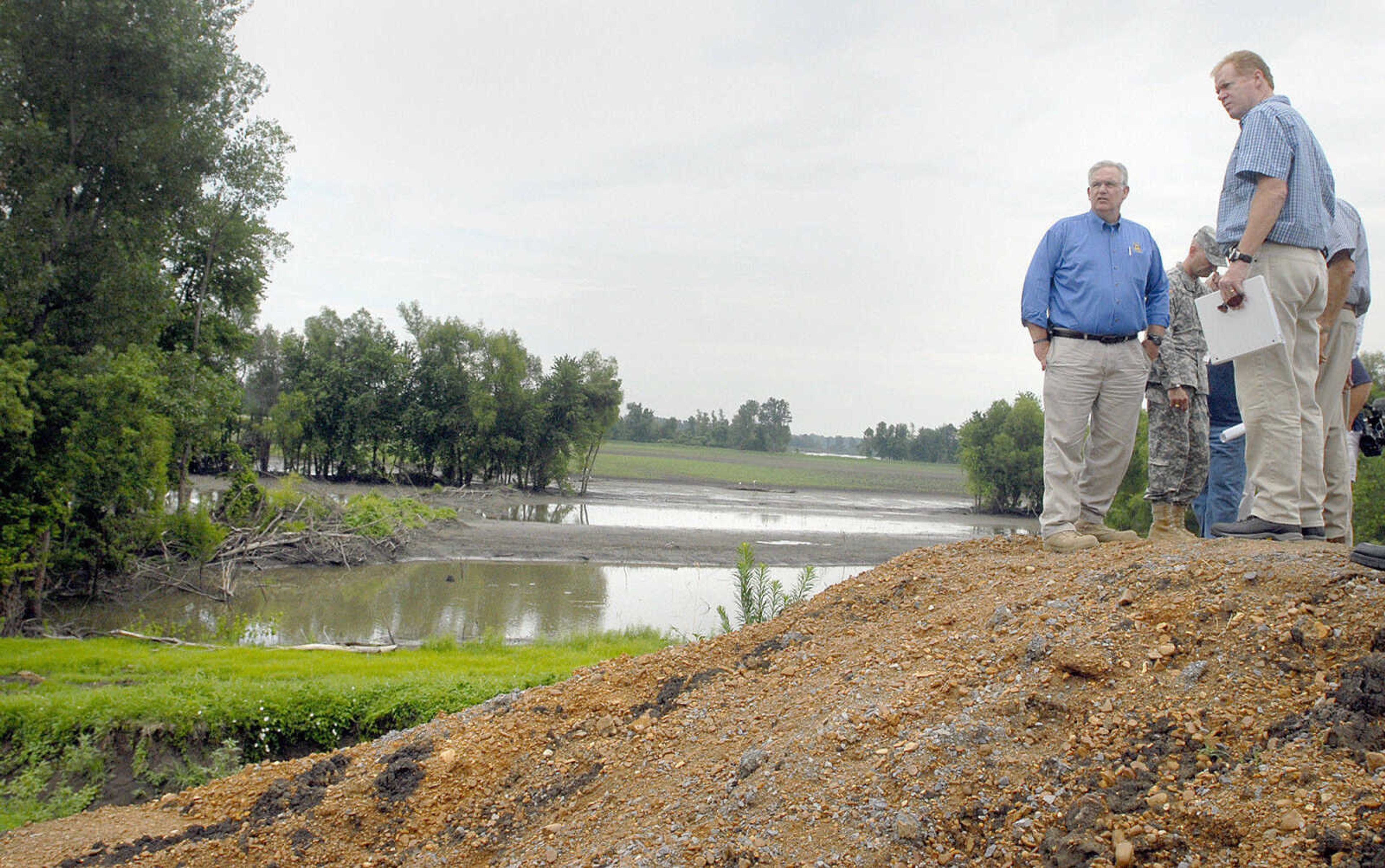Missouri state officials unsure of disasters' cost
JEFFERSON CITY, Mo. -- Missouri officials said Tuesday it was too soon to project how much the state will need to pay for responding to this year's spate of natural disasters.
JEFFERSON CITY, Mo. -- Missouri officials said Tuesday it was too soon to project how much the state will need to pay for responding to this year's spate of natural disasters.
Budget director Linda Luebbering told a legislative committee Tuesday that officials do not yet have enough information to make firm estimates about what the total cost will be and how much of that state government will end up paying. Luebbering said officials cannot even get into some flooded areas such as inundated state parks to assess the damage.
"We do not have firm estimates on the cost of disaster recovery -- certainly not in Joplin and even less so in the flooded areas. It's very early in that process," she said.
Tornadoes struck St. Louis in April and Joplin and Sedalia in May. There also has been significant flooding along the Mississippi and Missouri rivers this year. Gov. Jay Nixon has pledged $150 million to pay for the state's share of the disaster recovery.
State Sen. Jim Lembke, R-St. Louis, said the U.S. Army Corps of Engineers created a disaster when they made the decision to flood thousands of acres in Southeast Missouri by destroying a portion of the Birds Point Levee in May. At the time, the corps said the destruction of the levee was necessary to reduce flooding in Cairo, Ill., and other towns in the area.
During a hearing of a Senate subcommittee looking into the cost to the state from the springs tornadoes and floods, Andreas Spillars, Deputy Director of the State Emergency Management Agency said SEMA was pressing FEMA to pay for more than 75 percent of the damages in the Bootheel flood zone. Lembke said the Corps of Engineers caused the flood, and the federal government should have to pay. The flood "happened because they blew up the levee. All right? I don't believe the state should be on the hook for one cent of that."
Luebbering said many state agencies involved in disaster response have paid for those activities using their regular operating budgets. In addition, state government has spent $6 million in the 2012 budget that started July 1 for disaster response largely through the Missouri National Guard and emergency management agency. Plus, $4 million was spent for disaster response in the previous year's state budget.
A panel for a state Senate committee created in the wake of the recent disasters met Tuesday in the state Capitol to examine the costs from disaster response.
Sen. Kurt Schaefer, the panel's chairman and the leader of the Senate Appropriations Committee, said he was not criticizing how much was devoted to disaster recovery but that there are questions about the way that money has been set aside.
Nixon cut more than $170 million from the 2012 budget in June, partly to cover the cost for disaster recovery. Those budget cuts included reductions in aid to colleges and universities, student scholarships and school busing.
Schaefer said a reason for questions about the $150 million reserved for disaster recovery is that it does not appear state government faces immediate bills.
"There is a legal process that exists in how the requests are made for budget expenditures and how those expenditures are approved, and I'm afraid it has really turned into somewhat of a gray area as of late," said Schaefer, R-Columbia.
Luebbering said the Nixon's administration thought it was critical to reassure communities that state government was reserving money for recovery costs.
"We know we have those obligations, and we absolutely want the local communities to know that the state has money set aside to meet its obligations," she said. "We don't want there to be any doubt in those local communities' minds."
Among the natural disasters Missouri has faced is a May 22 tornado that killed 160 people in the Joplin-area. Financial officials from the school district and Joplin city government testified Tuesday at the Capitol.
Leslie Jones, the city's finance director, estimated that Joplin faced about $29 million in costs, of which the city would be responsible for roughly $11 million. That covers expenses such as demolition and repairing streets, traffic signals and other infrastructure. Jones said the city also anticipates it will lose about $6 million revenue, including $1.6 million from sales taxes.
In all, Jones said the disaster is expected to leave a $17 million or roughly a 19 percent mark on the city's projected budget for next year.
Ten school buildings were damaged or destroyed by the deadly tornado, and the school district estimated losses to infrastructure and the contents of buildings would be $150 million -- though it expected it could recover much of it from insurance. The school district in Joplin also could have to pay several million dollars for temporary classrooms and space.
Connect with the Southeast Missourian Newsroom:
For corrections to this story or other insights for the editor, click here. To submit a letter to the editor, click here. To learn about the Southeast Missourian’s AI Policy, click here.









